Affiliate links on Android Authority may earn us a commission. Learn more.
Samsung Galaxy Note 9 vs LG V40 ThinQ specs comparison
October 5, 2018
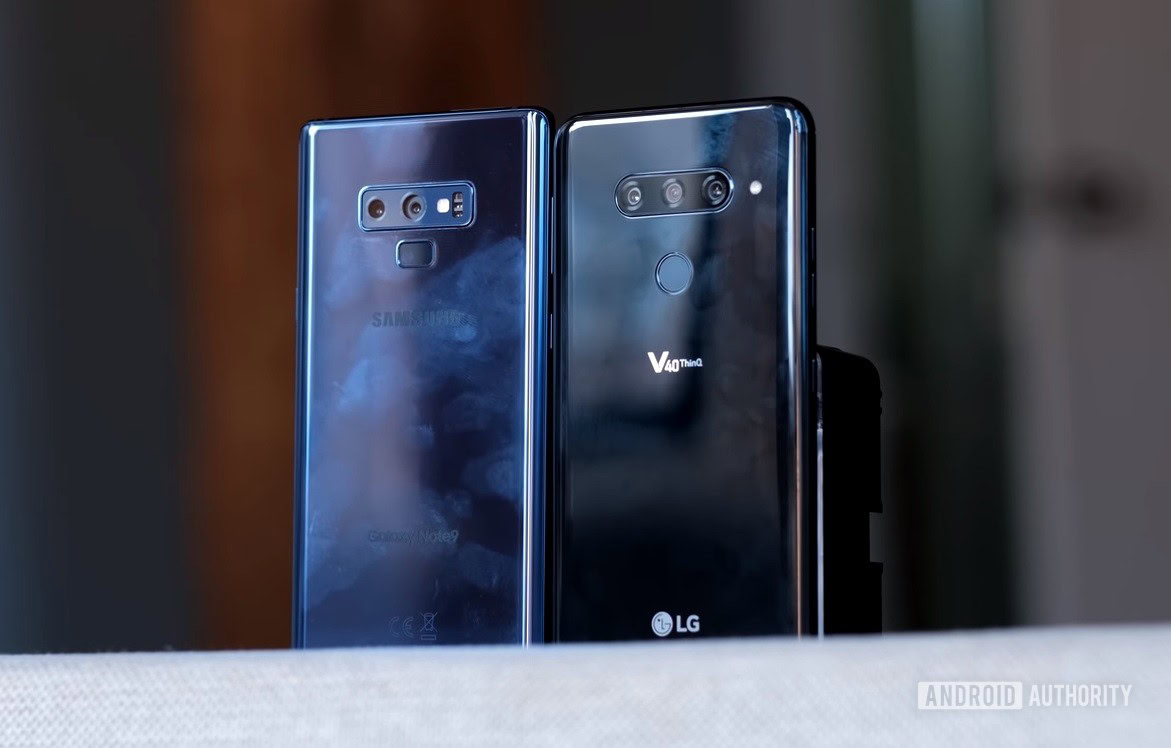
We’ve already spent more than a week with LG’s new V40 ThinQ flagship, and published our full review yesterday, but there’s more to talk about.
Today let’s have a look at how the phone stacks up against its major rival, the Samsung Galaxy Note 9, in specs and design.
Galaxy Note 9 vs LG V40: Design
These handsets tick many of the same boxes in their design and specs. They’re big phones, with shiny, fingerprint-hungry, metal-framed, glass bodies. Both handsets feature horizontally aligned cameras on the back, with center-mounted fingerprint scanners beneath. The V40 ThinQ has a rounder form than the Note 9’s more matchbox-like style.
Which design is best is largely a matter of personal taste, though the V40 ThinQ’s notch may swing it for you. You’ll see it every time you use the phone and the Note 9 doesn’t have one.

The LG V40 ThinQ is also about 15 percent lighter than the Note 9 (169g versus 201g), despite similar looks and components. It may not be a game changer, but it’s interesting.
Galaxy Note 9 vs LG V40: Display and performance
A glance at the display and performance specs reveals more similarities. Both OEMs are known for their screen tech (they make top-of-the-line TV sets on the side, don’t you know) and their latest phones carry 6.4-inch OLED displays with Quad HD+ resolutions.
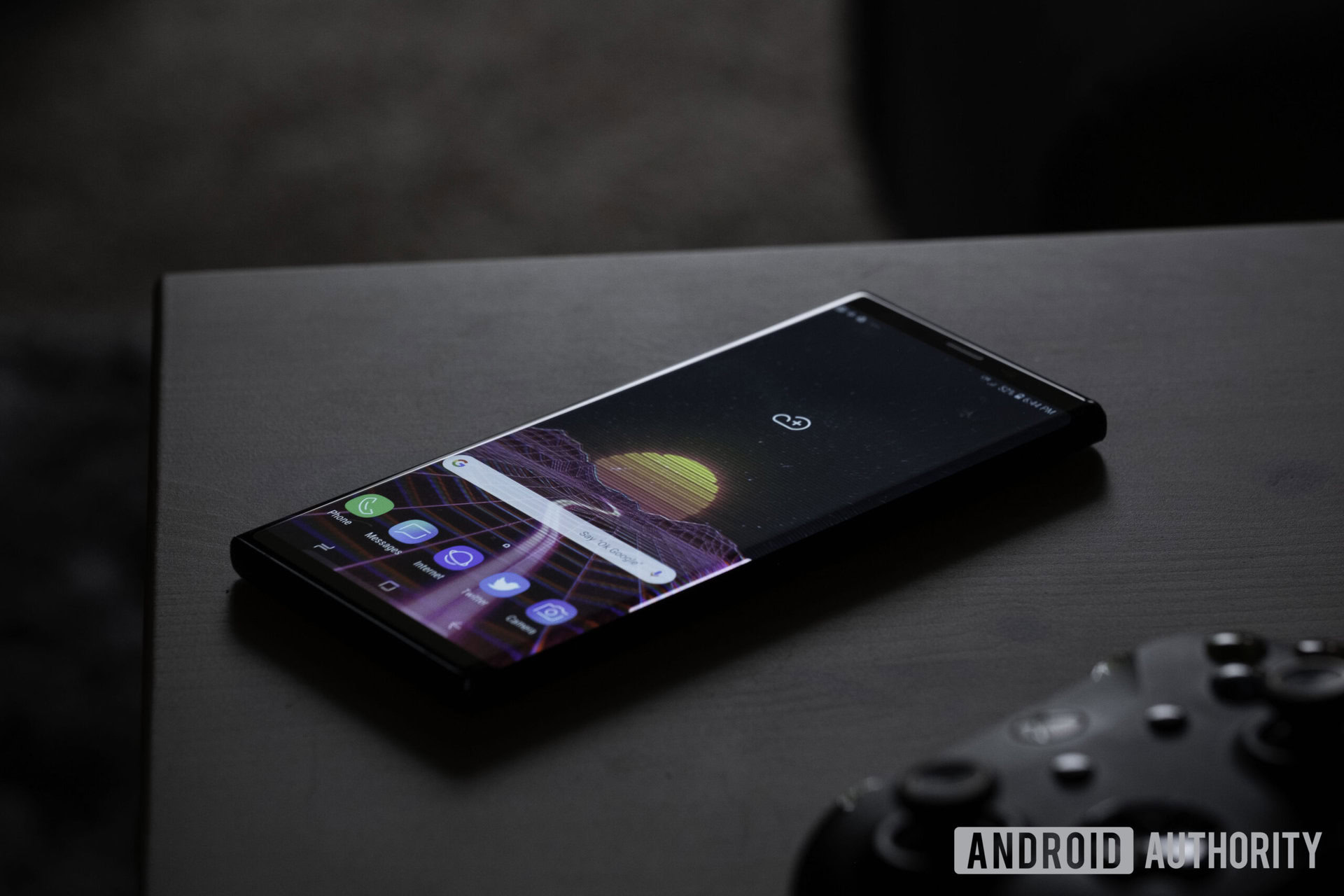
Aside from a slightly higher pixel count on the V40 ThinQ (owing to its notch usage), they’re well-matched. However, as our own David Imel already pointed out in his review, the V40 ThinQ display “definitely isn’t as crisp and punchy as something like the Samsung Galaxy Note 9.”
The pair both use Qualcomm’s current best chip, the Snapdragon 845 chip (or an Exynos equivalent for Note 9s sold outside of the U.S.), and start at 6GB of RAM.
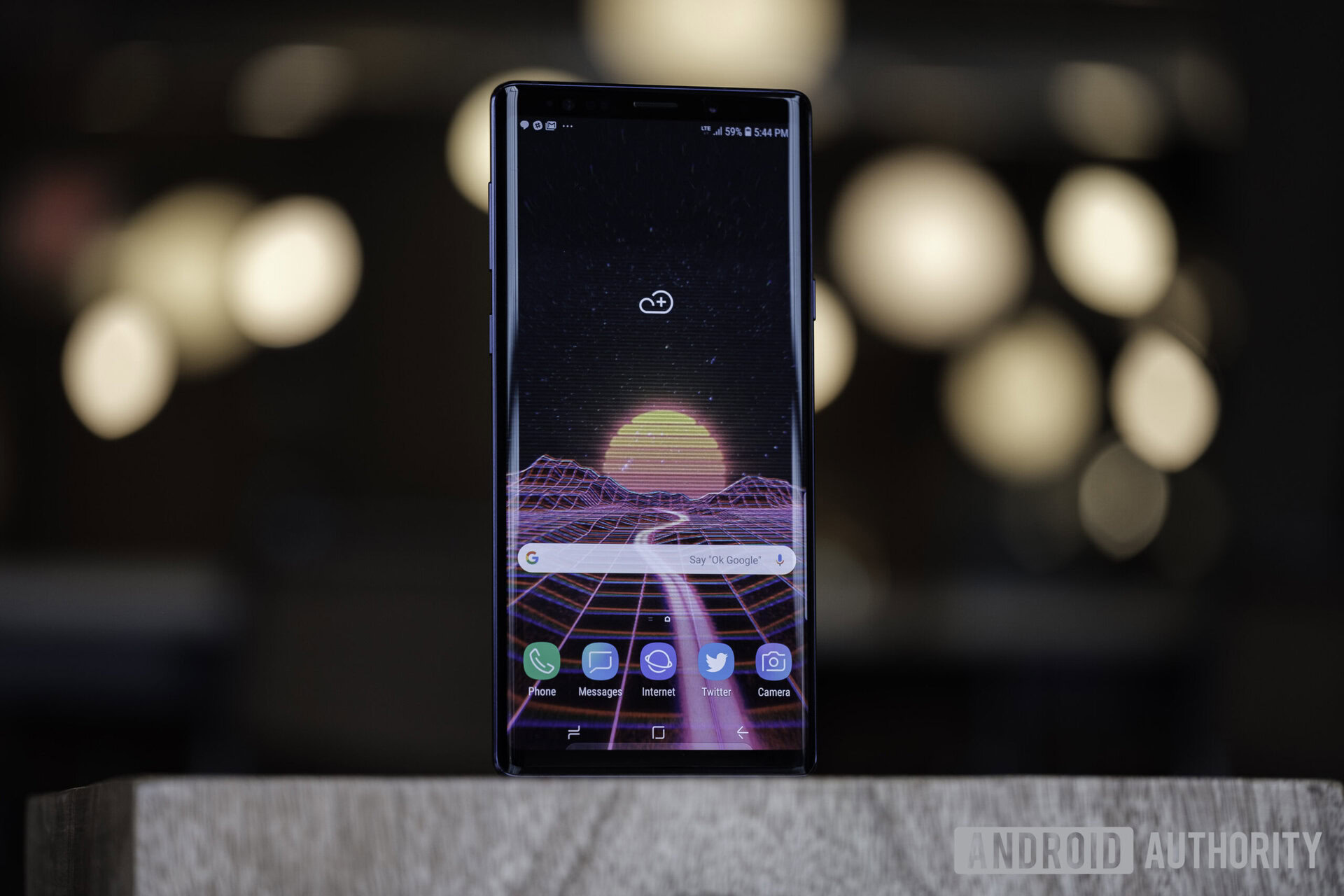
While the V40’s LPDDR4x RAM is technically more efficient than the Note 9’s LPDDR4, Samsung’s 8GB LPDDR4 Note 9 variant would be more powerful still. When talking about 6GB RAM and a Snapdragon 845, though, you’re already at Grand Prix speeds. I’d be surprised if the 8GB Note 9 felt more than marginally faster than the 6GB V40 ThinQ.
Galaxy Note 9 vs LG V40: Cameras
The Note 9’s dual cameras vs. the ThinQ’s triple-camera setup is an interesting matchup.
LG delivers an ultra-wide-angle lens and a telephoto lens, as well as a more conventional lens. Samsung has the conventional and telephoto lenses only. These stats alone don’t tell us anything about camera performance, but they reveal something about their options.
The Note 9's camera is widely regarded as one of the best — if not the best — in the world today.
LG can shoot with its three cameras (almost) simultaneously to make short GIFs, or so you can choose the best snap later — features single- or dual-lens cameras simply don’t allow for. This hasn’t guaranteed quality in the end product however. David was left overall unimpressed with the V40 ThinQ’s camera in his review, finding the telephoto lens consistently blurry.
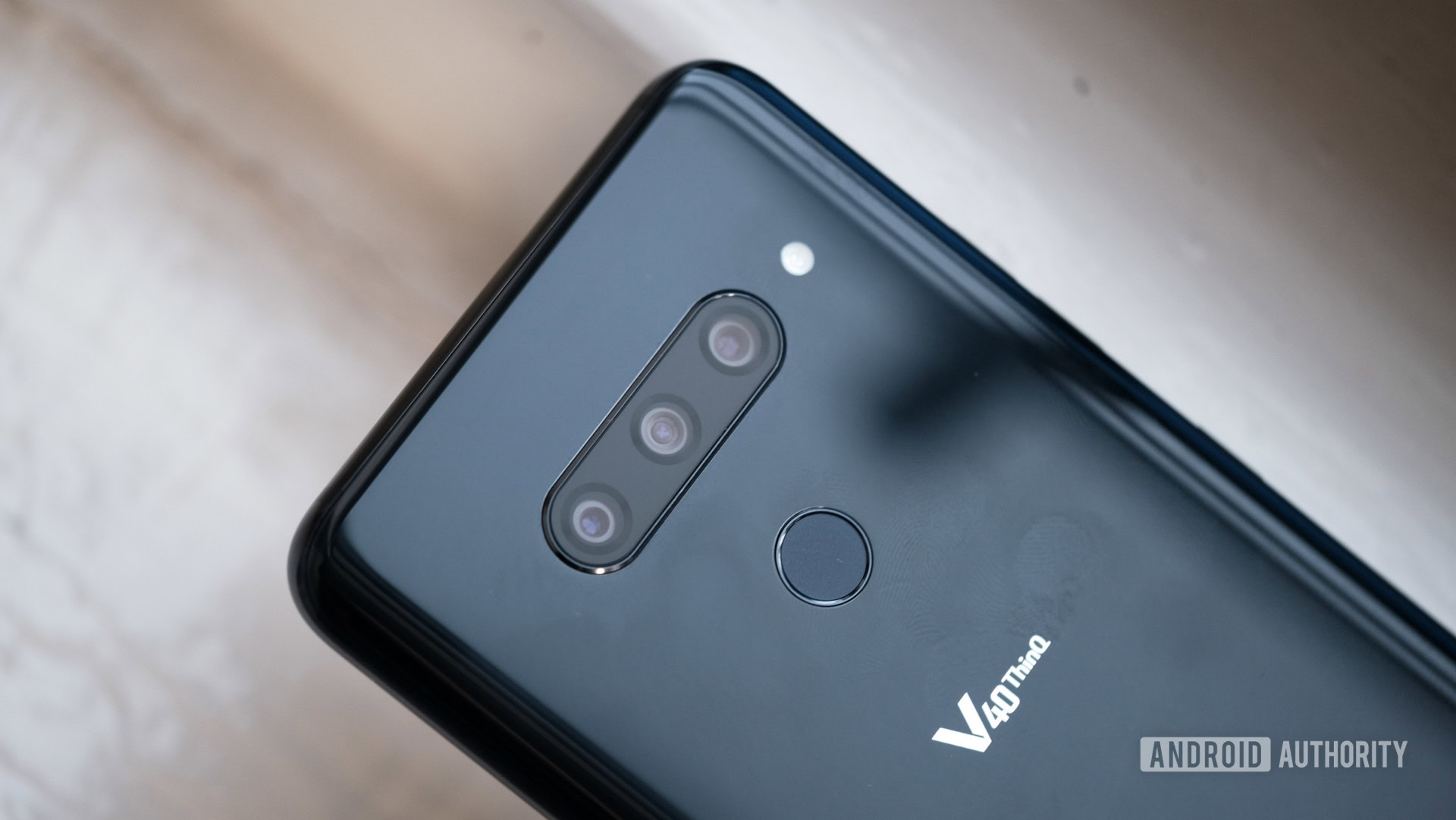
The Note 9’s approach is perhaps not as “advanced” as the V40’s, and more typical of modern flagships. Its camera is also widely regarded as one of the best — if not the best — in the world today. Take a look at the snaps in the folder below to see what we’re talking about, and how they hold up against the V40 ThinQ.
As for the front-facing cameras, LG’s dual-lens approach means you can either take high-quality selfies with the standard 8MP camera or get wide-angle group selfies with the 5MP snapper. Samsung offers a solitary 8MP camera on the front, and no wide-angle shooter. The Note 9 includes a wide-angle mode, but it works more like a panorama mode, and isn’t as seamless or intuitive as a wide-angle camera.
Galaxy Note 9 vs LG V40: Audio
LG is the winner in the audio category and it’s no real surprise: the OEM places special focus on the audio in its major phones.
The handset can almost act as a dedicated Bluetooth speaker when placed on a hard surface thanks to its Boombox tech, which optimizes the audio by using the phone’s body as a resonance chamber. Clever.
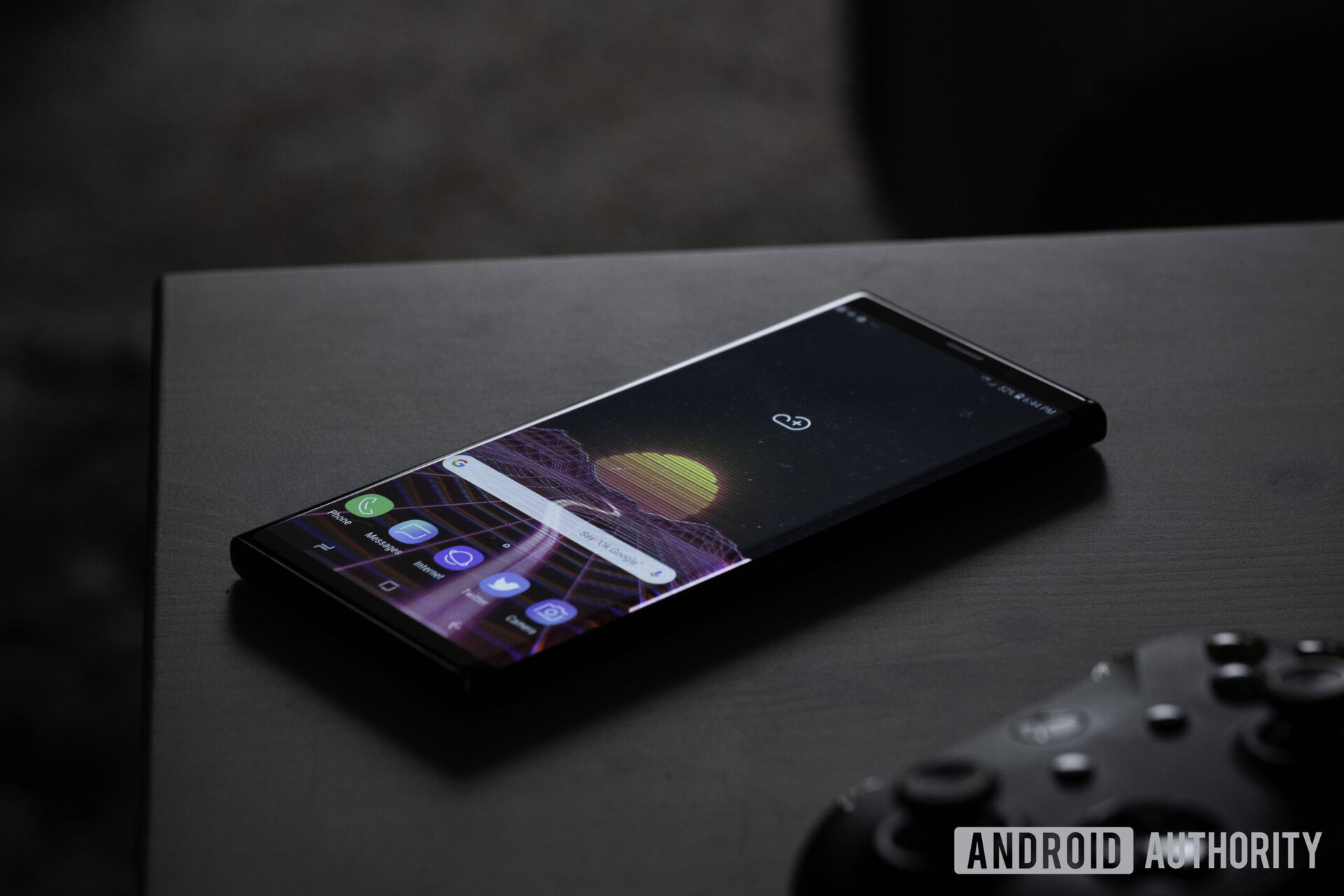
The V40 ThinQ also has a 32-bit Hi-Fi Quad DAC, meaning higher quality audio when listening with a wired connection (both phones support 3.5mm headphone jacks).
Samsung isn’t without audio chops of its own, with AKG audio tuning and support for Dolby Atmos surround sound. However, LG’s audio game is more purposeful and likely to deliver better results for a wider number of users (most people aren’t inordinately concerned with surround sound via their smartphone).
Galaxy Note 9 vs LG V40: Battery
Remember when we talked about the weight difference before? Well, I think I understand part of the reason.
The V40 ThinQ’s battery is about 17.5 percent smaller than the Note 9’s battery, at 3,300mAh versus 4,000mAh. And when you’re talking batteries small enough to fit inside a smartphone — and power their incredible components — this 700mAh can make a significant difference.
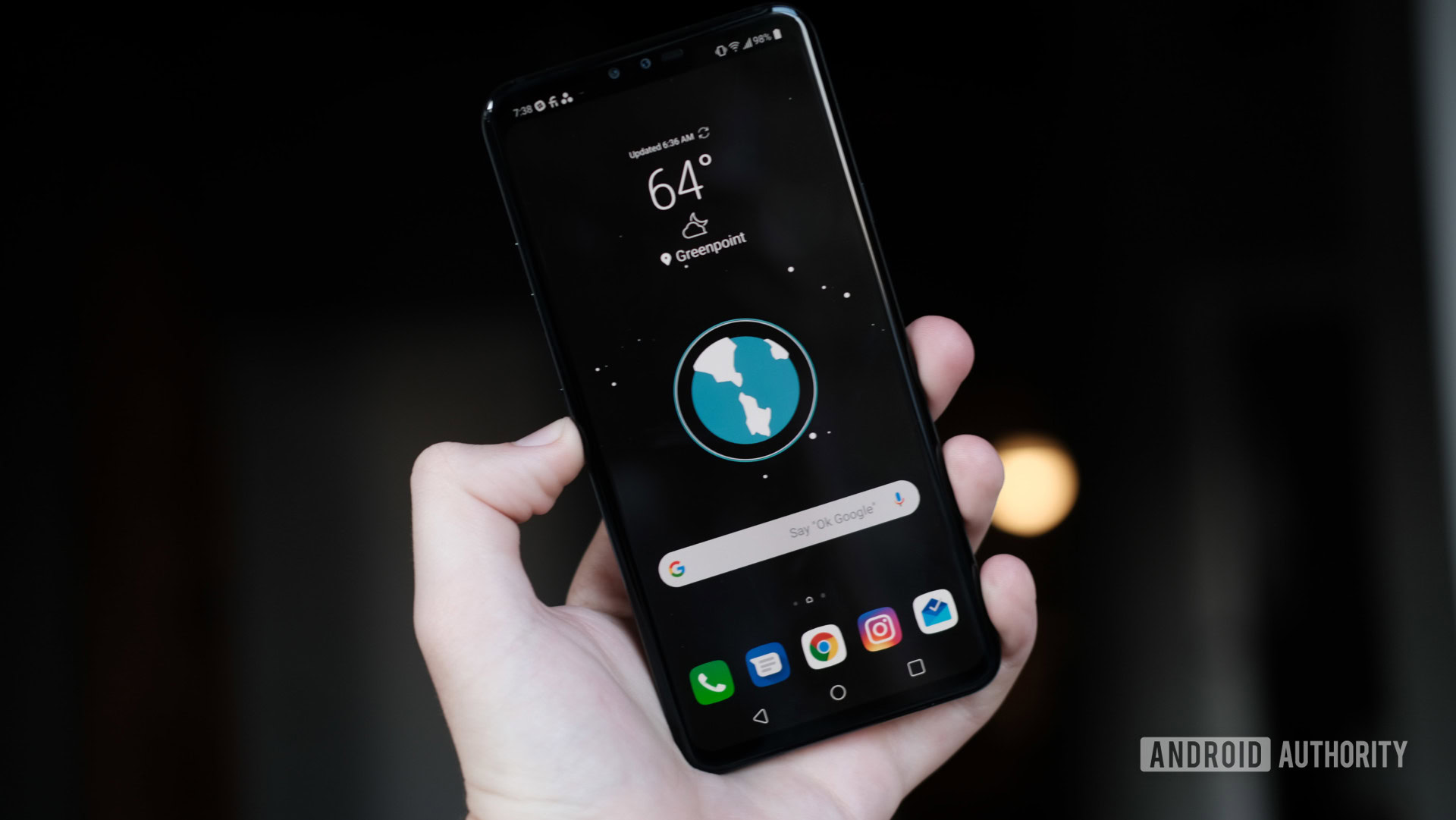
It’s early days yet, but it already seems like the LG V40 ThinQ has inferior battery life, as its lower capacity suggests.
With batteries so small they can fit inside a smartphone and power their incredible components, 700mAh can make a significant difference.
It’s not all bad news for LG though — its battery should charge faster thanks to Quick Charge 4.0 compatibility. You’ll need to buy a compatible charger yourself (LG only supplies a Quick Charge 3.0 charger), but it should beat the Quick Charge 2.0 compatible Galaxy Note 9, especially seeing as it has a smaller battery to fill. Both the Note 9 and V40 ThinQ support wireless charging too.
Read more: Samsung Galaxy Note 9 battery review: Huge, but enough?
Ultimately, it’s a case of what you prefer: do you want a phone that lasts longer once charged, or one with a shorter standby time that’s quicker to charge?
Galaxy Note 9 vs LG V40: Extras
The LG V40 ThinQ is packed with flagship goodies, but it’s still a tough match against a premium Samsung phone: the Note 9 generally runs toe-to-toe with its newer rival.
Both phones feature wireless charging and a headphone jack, as previously mentioned, as well as IP68 certification for dust and water resistance and microSD card support. The V40 ThinQ boasts military-grade durability (MIL-STD 810G), but that’s basically meaningless. The Note 9 may be the sturdier handset despite not wearing this badge.
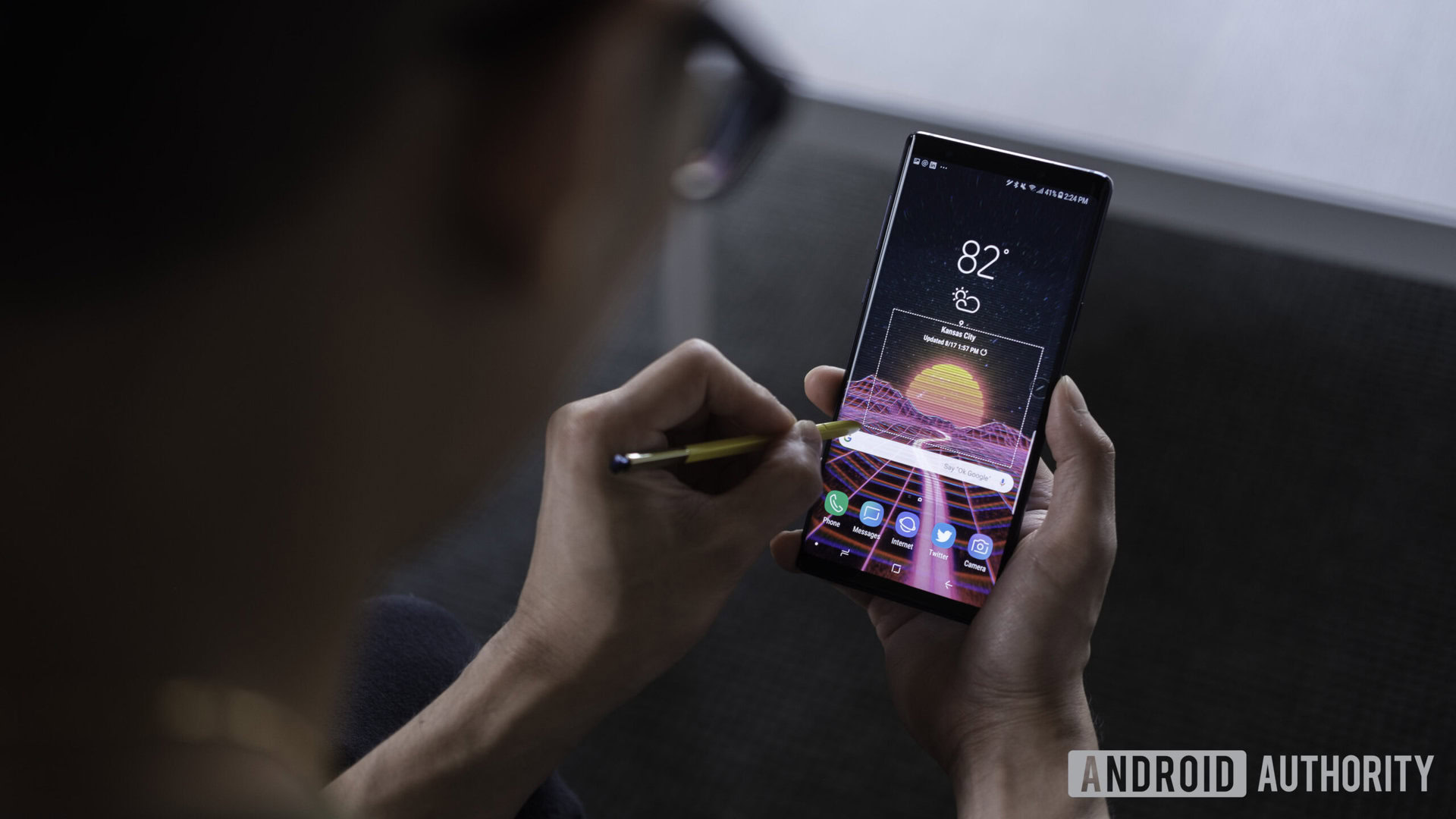
Meanwhile, Galaxy Note 9 comes with a sizeable extra we haven’t touched on yet: the S Pen. Samsung’s unique, now Bluetooth-enabled, stylus lets you draw on the screen, take notes, and more. If styli are your thing, there’s no better smartphone than the Note 9.
LG boasts military-grade durability (MIL-STD 810G) for the V40 ThinQ, but the term means nothing.
Galaxy Note 9 vs LG V40: Price
These phones will burn a hole through your wallet, your pocket, and will possibly break the skin of your butt cheek too. The 64GB V40 ThinQ cost $900 to $1,000 depending on the carrier, while the 128GB Note 9 will set you back $999.
We’re already starting to see the Note 9’s price come down through certain offers, and LG has historically been swift to give its flagships price cuts. In the leadup to the holiday season, we could see these costs dramatically reduced.
| LG V40 ThinQ | Samsung Galaxy Note 9 | |
|---|---|---|
Display | LG V40 ThinQ 6.4-inch QuadHD+ P-OLED FullVision 3,120 x 1,440 resolution 538ppi Corning Gorilla Glass 5 19.5:9 aspect ratio HDR 10-capable | Samsung Galaxy Note 9 6.4-inch QuadHD+ Super AMOLED 2,960 x 1,440 resolution 516ppi Corning Gorilla Glass 5 18.5:9 aspect ratio |
Processor | LG V40 ThinQ Octa-core Qualcomm Snapdragon 845 | Samsung Galaxy Note 9 U.S.: Octa-core Qualcomm Snapdragon 845 Global: Samsung Exynos 9810 |
GPU | LG V40 ThinQ Adreno 630 | Samsung Galaxy Note 9 U.S.: Adreno 630 Global: Mali-G72 MP18 |
RAM | LG V40 ThinQ 6GB LPDDR4x | Samsung Galaxy Note 9 6GB or 8GB RAM LPDDR4 |
Storage | LG V40 ThinQ 64GB / 128GB MicroSD expansion up to 2TB | Samsung Galaxy Note 9 128GB / 512GB expandable via microSD up to 512GB |
Cameras | LG V40 ThinQ Rear Main camera: 12MP sensor, ƒ/1.5 aperture, 78° field-of-view, 1.4µm pixel size, OIS, Dual PD Autofocus Super wide: 16MP sensor, ƒ/1.9 aperture, Crystal Clear Lens, 107° field-of-view Telephoto zoom: 12MP sensor with 45° field of view Front Standard: 8MP sensor, ƒ/1.9 aperture, 80° field-of-view Wide: 5MP sensor, ƒ/2.2 with 90° field-of-view | Samsung Galaxy Note 9 Rear Wide-angle: Super Speed Dual Pixel 12MP AF sensor with OIS, f/1.5 and f/2.4 apertures Telephoto: 12MP AF sensor, f/2.4 aperture, OIS, 2x zoom Front 8MP AF sensor, f/1.7 aperture |
Audio | LG V40 ThinQ Boombox Speaker DTS:X 3D Surround Sound Hi-Fi Quad DAC Audio Tuned by Meridian 3.5mm headphone jack | Samsung Galaxy Note 9 Dolby Atmos surround sound technology Audio tuned by AKG 3.5mm headphone jack |
Battery | LG V40 ThinQ 3,300 mAh Non-removable Fast wireless charging Qualcomm Quick Charge 3.0 (Qualcomm Quick Charge 4.0 compatible) USB Type-C port | Samsung Galaxy Note 9 4000 mAh Non-removable Fast wireless charging Qualcomm Quick Charge 2.0 USB Type-C port |
IP rating / other certifications | LG V40 ThinQ IP68 water and dust resistance MIL-STD 810G | Samsung Galaxy Note 9 IP68 water and dust resistance |
Network | LG V40 ThinQ LTE-A 4 Band CA | Samsung Galaxy Note 9 Enhanced 4X4 MIMO/CA, LAA, LTE Cat. 18 |
Connectivity | LG V40 ThinQ Wi-Fi 802.11 a, b, g, n, ac Bluetooth 5.0 BLE NFC FM Radio | Samsung Galaxy Note 9 Wi-Fi 802.11 a/b/g/n/ac, dual-band, Wi-Fi Direct, hotspot Bluetooth 5.0, A2DP, LE, aptX NFC |
SIM | LG V40 ThinQ Nano SIM | Samsung Galaxy Note 9 Nano SIM |
Software | LG V40 ThinQ Android 8.1 Oreo | Samsung Galaxy Note 9 Android 8.1 Oreo |
Colors | LG V40 ThinQ New Aurora Black, New Platinum Gray, New Moroccan Blue, Carmine Red | Samsung Galaxy Note 9 Metallic Copper, Midnight Black, Lavender Purple, Ocean Blue |
Dimensions and weight | LG V40 ThinQ 158.7 x 75.8 x 7.7mm 169g | Samsung Galaxy Note 9 161.9 x 76.4 x 8.8mm 201g |
Okay, but which one is better?
If you’re weighing which of these phones to buy, you’ve got a pretty easy ride, to be honest. You’ll get a big and powerful handset no matter what. The decision really comes down to which bells and whistles you’d like.
If you want a stylus and one of the best rear cameras in town, spring for Samsung’s Galaxy Note 9. If you want (probably) better selfies and audio, pick up the LG V40.
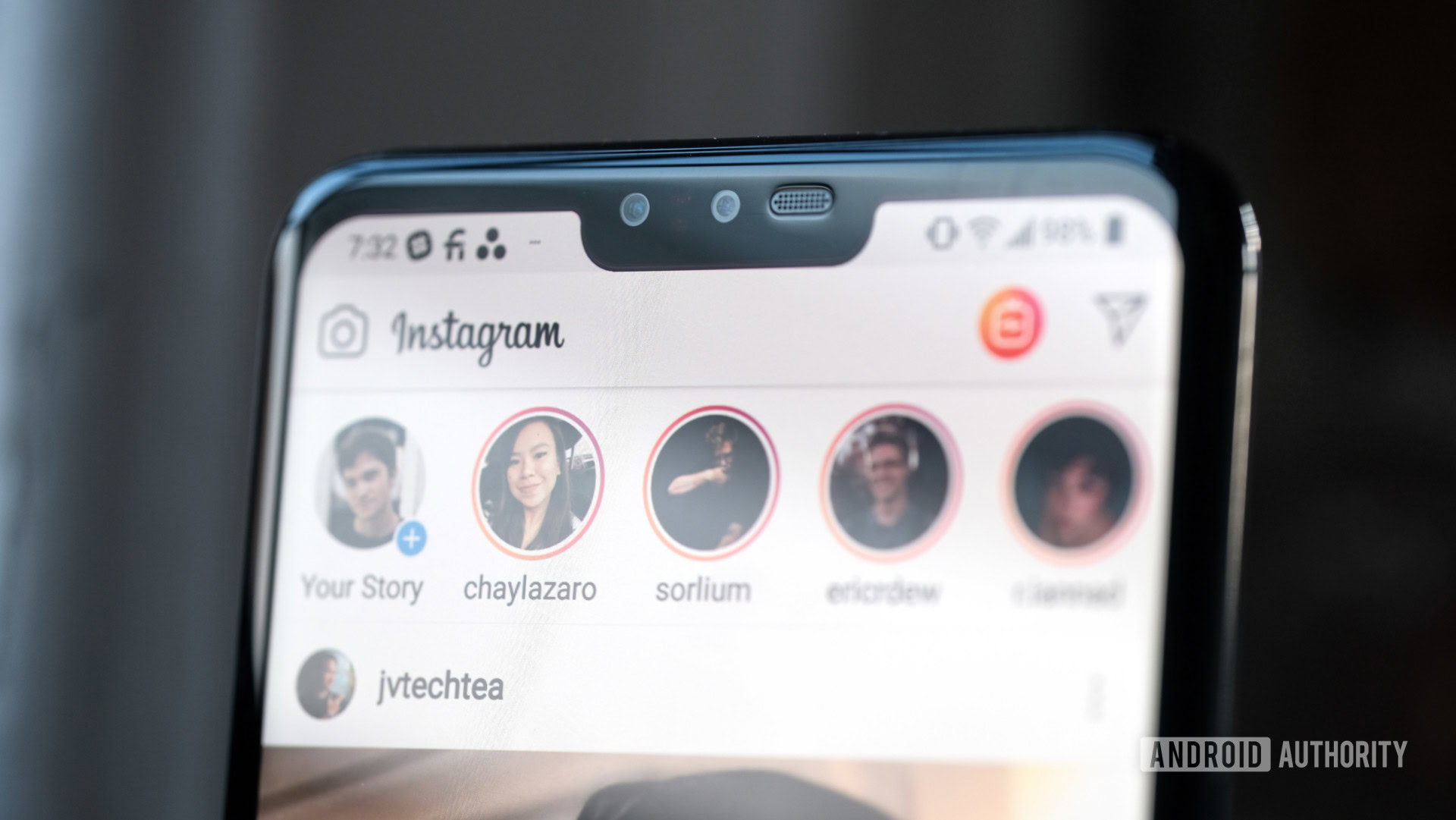
If you still can’t decide and want me to decide for you, I’d choose the Note 9. Your headphone choice will do more for audio quality than a Quad DAC will (can’t wait to defend this point in the comments!), and you can pick up a selfie stick if you need a wider selfie.
The V40 ThinQ may see a future software upgrade to improve its camera in some areas, but it also may not. There’s no way it’s getting a gorgeous Super AMOLED display or an S Pen, though.
Give us your thoughts on the debate in the comments, and check out our other V40 ThinQ coverage via the links below.
More LG V40 ThinQ coverage:
Thank you for being part of our community. Read our Comment Policy before posting.